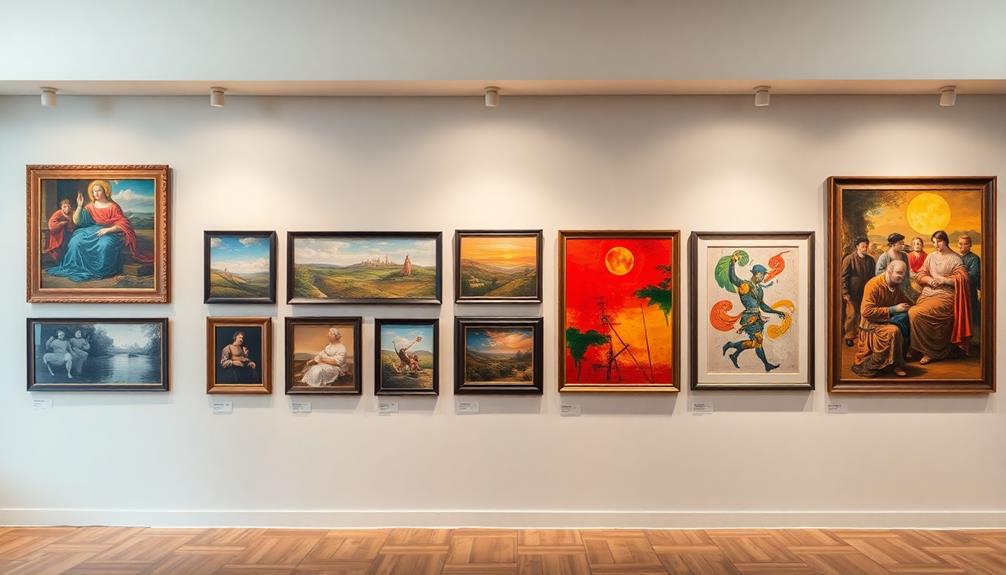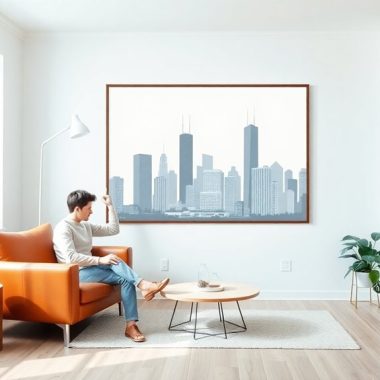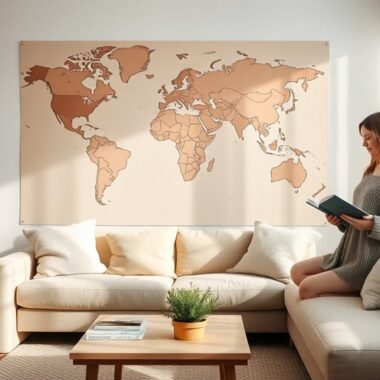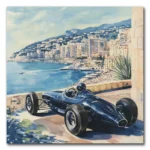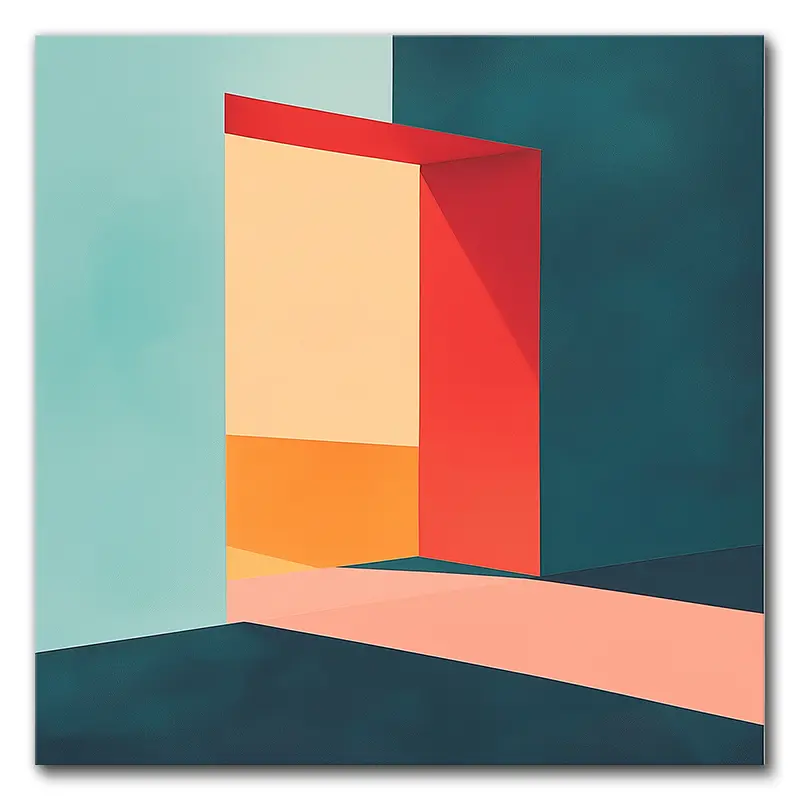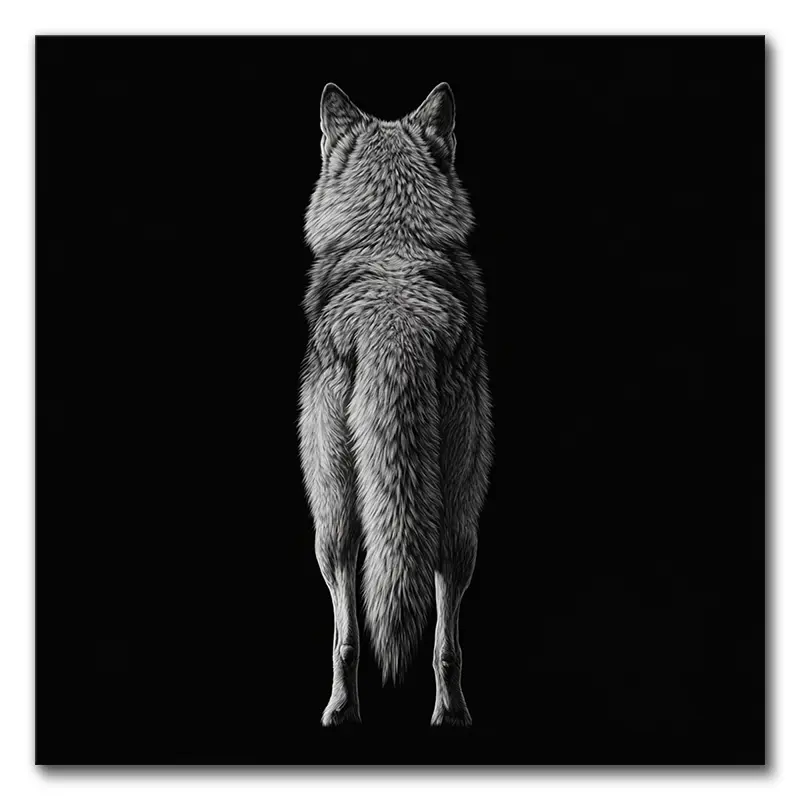The evolution of canvas wall art from the Renaissance to modern times showcases incredible artistic progression. Initially favored by masters like Titian and Raphael, canvas allowed for larger, more dynamic pieces. Over time, improvements in priming and sizing led to richer colors and greater durability. The Industrial Revolution democratized art by making machine-woven canvas affordable, opening doors for emerging artists. Today, sustainability is key, with eco-friendly materials gaining popularity. Innovations like digital printing enhance accessibility, allowing anyone to appreciate diverse styles. It's fascinating to see how canvas continues to shape our artistic landscape, inviting you to explore its rich history even further.
Historical Development of Canvas Art
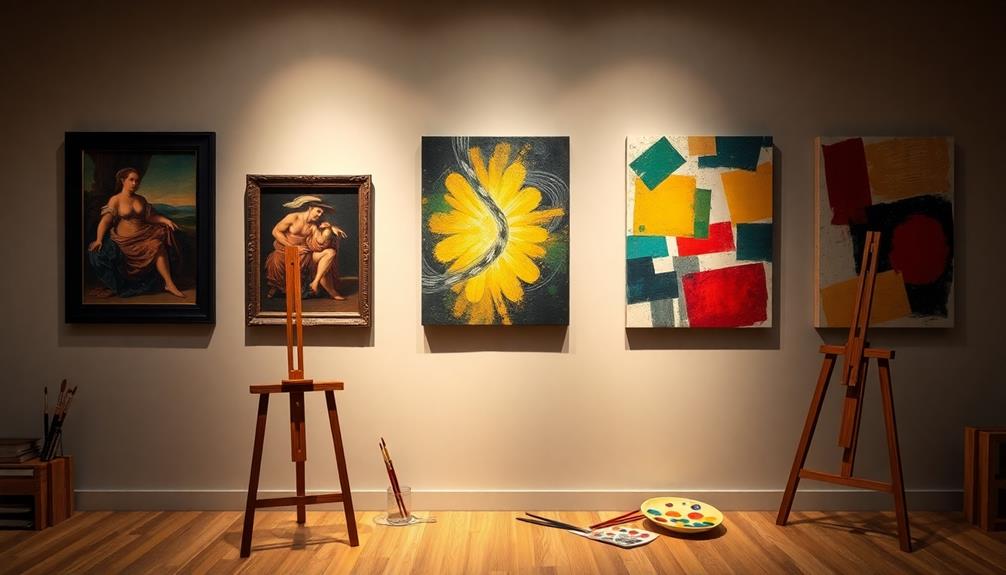
Throughout history, artists have embraced canvas as a versatile painting surface, especially during the Renaissance. This period marked a significant shift from traditional wood panels to the lightweight and flexible canvas, enabling the creation of larger and more dynamic compositions. You can imagine how artists like Titian and Raphael seized this opportunity, producing expansive works that captivated audiences.
Innovations in sizing and priming oil paints made the art canvas even more user-friendly, allowing for richer colors and smoother applications. The development of wooden frames and the technique of stretching canvas provided essential support, ensuring that artists could work on taut, even surfaces. This advancement transformed the way they approached their craft, leading to more intricate and detailed pieces.
As the Industrial Revolution rolled in, machine-woven canvas and standardized frames became widely available, simplifying preparation and making it easier for aspiring artists to engage in creating canvas wall art.
Fast forward to today, and modern wall art canvas reflects an increasing awareness of environmental issues. Many contemporary artists focus on sustainability, opting for eco-friendly materials and non-toxic paints. This evolution shows how the art community is adapting to modern challenges while continuing to celebrate the rich history of canvas as a preferred medium.
Evolution of Techniques and Materials
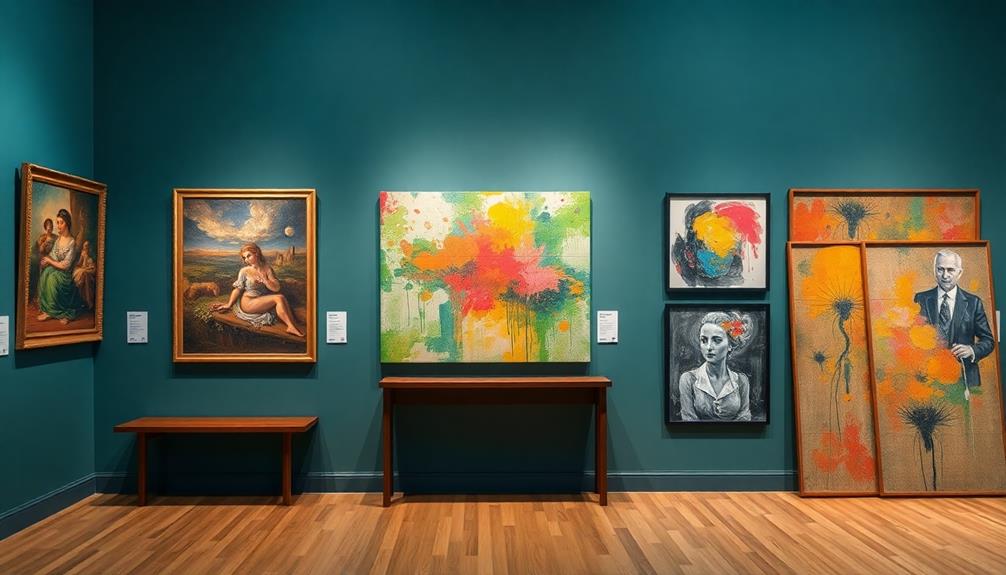
As you explore the evolution of canvas art, you'll find that each era brought its own innovations in techniques and materials.
Starting with the Renaissance, artists refined sizing and priming methods, which laid the groundwork for vibrant oil paintings.
Fast forward to today, and you'll notice a shift toward sustainability, with artists embracing eco-friendly materials while still pushing boundaries in their creative expressions.
Renaissance Innovations in Canvas
How did the Renaissance transform the canvas into an indispensable medium for artists? During this vibrant era, canvas emerged as a preferred painting surface, thanks to its lightweight nature. This allowed you to create larger compositions, pushing the boundaries of artistic expression beyond what wooden panels could offer. Artists like Titian and Raphael recognized this potential, embracing canvas for their expansive works.
Innovations in sizing and priming played a vital role in enhancing canvas surfaces for oil paints. These techniques refined the smoothness of the canvas, allowing for multiple layers of vibrant color. You'd find that this not only enriched the visual depth of the artwork but also provided a more durable surface to work on.
Additionally, the development of wooden frames offered indispensable support, enabling you to create taut and even surfaces that minimized warping and cracking. This was a game changer, as it guaranteed your artwork maintained its integrity over time.
The shift to canvas during the Renaissance marked a significant change, paving the way for diverse techniques and styles that would influence future art movements. It's fascinating to think how these innovations laid the groundwork for the canvas wall art we admire today!
Industrial Revolution Advancements
The Industrial Revolution transformed the world of art by making canvas more accessible than ever. With the introduction of machine-woven canvas, artists found themselves with a plentiful and affordable resource, enabling countless individuals to explore painting. This surge in availability led to a democratization of art, as more people from diverse backgrounds began experimenting with this versatile medium.
Standardized wooden frames became widely available, simplifying the canvas preparation process. You no longer had to worry about the structural integrity of your artwork, as these frames provided essential support.
And if stretching canvas seemed like a chore, innovations in pre-stretched canvases removed that burden entirely, allowing you to focus on your creative expression.
Moreover, advancements in priming techniques meant smoother surfaces for your art. This reduced paint absorption, making colors pop with vibrancy and giving you the chance to showcase intricate brushwork in your oil paintings.
The combination of these developments not only enhanced artistic capabilities but also encouraged a flourishing community of artists enthusiastic to share their unique visions.
Sustainable Artistic Practices
In recent years, sustainable artistic practices have gained significant traction among canvas artists. You might notice that many are now opting for organic cotton and recycled polyester blends for their canvases. This shift isn't just about personal preference; it reflects a broader commitment to reducing environmental impact.
Innovations in canvas preparation are also remarkable. Eco-friendly gesso and non-toxic paints are becoming the norm, ensuring that artists can create without compromising their health or the planet's well-being.
Plus, many studios are adopting waste minimization strategies. By using digital tools, artists can cut down on physical materials, which is a smart move towards more sustainable art creation.
You'll find that artists are increasingly sourcing alternative materials, such as upcycled fabrics and recyclable substrates. This approach not only maintains artistic integrity but also contributes to a more eco-conscious practice.
Additionally, the trend towards sustainability resonates with consumers, who are more likely to support artists that prioritize eco-friendly products. In this evolving landscape, artists are shaping a future where creativity and environmental responsibility go hand in hand, making every brushstroke count for both art and the planet.
Accessibility and Affordability
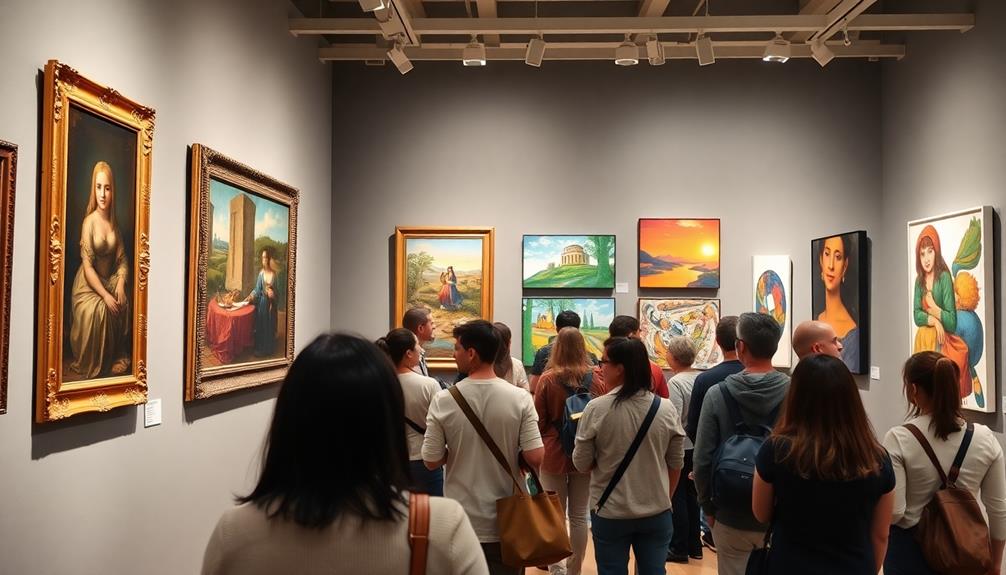
As artists embrace new materials and technologies, accessibility and affordability in canvas wall art have transformed the creative landscape. The introduction of machine-woven canvas and standardized frames during the Industrial Revolution made pre-stretched canvases readily available. This innovation simplified the preparation process, allowing artists from diverse backgrounds to engage in the creative process without facing significant financial constraints.
You might be surprised to learn that the affordability of canvas materials and frames has democratized art creation. Now, you can find high-quality replicas of antique oil paintings at a fraction of the cost. This has opened the doors for a broader audience to appreciate art forms that were once reserved for the elite.
With online marketplaces offering custom artwork and digital art, acquiring unique pieces has never been easier or more affordable.
Imagine being an emerging artist with limited resources. Thanks to affordable tools and materials, you can develop your skills and experiment with your creativity. This shift not only empowers you but also leads to a more dynamic and varied artistic landscape.
As a result, the art world is thriving with fresh ideas and innovations, encouraging everyone to explore their creative potential.
In this evolving scene, accessibility and affordability are essential. They guarantee that art isn't just for the wealthy but for anyone with a passion for creativity.
Influence on Artistic Styles
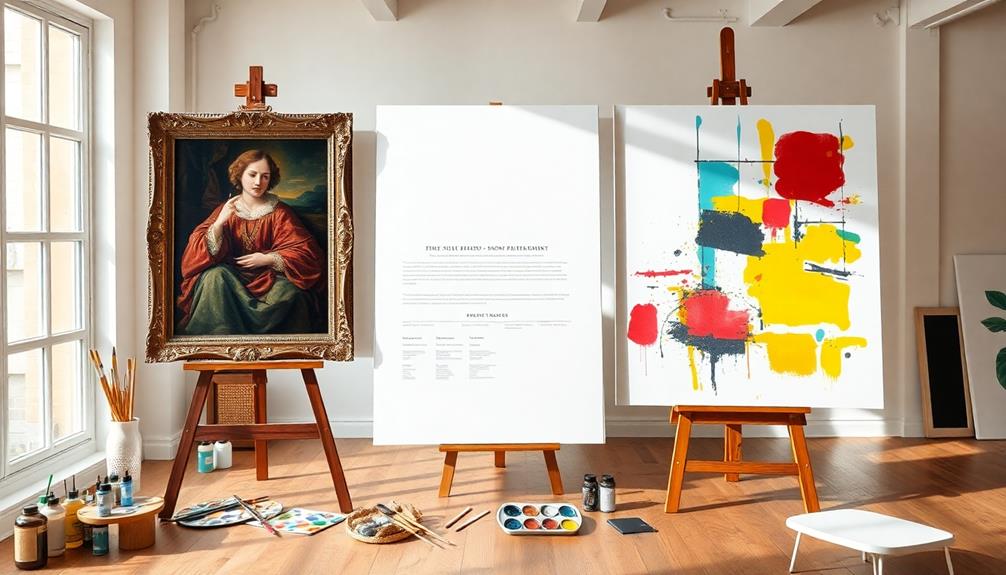
When you think about how canvas has shaped artistic styles, you can't help but notice its impact on everything from Renaissance innovations to modern experimentation.
Artists like da Vinci and Monet pushed boundaries, using canvas to explore techniques and emotions in ways that changed art forever.
Renaissance Innovations and Techniques
The Renaissance marked a turning point in artistic expression, with artists embracing canvas as their primary medium. This shift allowed for larger compositions and greater emotional depth in their works. Pioneers like Titian and Raphael utilized sizing and priming techniques to create sturdy surfaces that enhanced the vibrancy of oil paints.
Imagine the difference it made when artists could paint on flexible canvas instead of rigid wooden panels!
The introduction of wooden frames for stretched canvas provided essential support, freeing artists to explore dynamic compositions. No longer limited by the constraints of traditional materials, they explored innovative priming methods. These advancements resulted in smoother surfaces that minimized warping and cracking, leading to higher-quality artworks.
As artists experimented with perspective and composition, they pushed boundaries, capturing the emotional essence of people and nature in ways previously unseen. The canvas became a canvas, if you will, for creativity and expression.
This evolution not only influenced technical practices but also transformed how art conveyed feelings, making it a vital period in the history of artistic styles. So, next time you admire a canvas piece, remember the innovative spirit of the Renaissance that made it all possible!
Modern Artistic Experimentation
Modern artistic experimentation has radically transformed how artists approach canvas, leading to diverse styles that challenge conventions. The evolution of techniques since the Renaissance has paved the way for fresh perspectives in art. You see, artists now embrace bold colors and varied textures, pushing boundaries that once seemed unthinkable.
| Artistic Movement | Key Characteristics |
|---|---|
| Impressionism | Vibrant palettes and spontaneous brushwork. |
| Cubism | Fragmented forms and multiple perspectives. |
| Surrealism | Dream-like scenes and bizarre imagery. |
| Mixed Media | Incorporation of diverse materials and themes. |
In the 19th century, movements like Impressionism encouraged you to appreciate light and color in new ways, while the 20th century introduced styles like Cubism, where Picasso deconstructed reality on canvas. Today, artists continue to innovate by incorporating mixed media and digital techniques, reflecting contemporary societal issues.
These modern approaches not only enrich the art world but also promote inclusivity in artistic expression. Through experimentation, artists continue to challenge and redefine what canvas art can be, ensuring its relevance and dynamism in your life and those around you.
Cultural Significance of Styles
Throughout art history, various styles have emerged, each carrying cultural significance that influences how we interpret and appreciate canvas art. During the Renaissance, the shift to canvas allowed masters like Titian and Raphael to explore expansive compositions and intricate details. This innovation played a vital role in the development of perspective and emotional expression in their works.
Fast forward to the Baroque period, and you see artists such as Caravaggio employing dramatic lighting and vibrant colors to evoke intense feelings and enhance storytelling.
As you move into the 19th and 20th centuries, the change to canvas paved the way for artistic movements like Impressionism and Cubism. Artists began to experiment with new perspectives and abstract forms, actively reshaping our understanding of art. The accessibility of canvas wall art democratized artistic expression, inviting a wider audience to engage with diverse styles, fostering appreciation and participation.
In contemporary times, figures like Banksy and Yayoi Kusama continue this evolution, pushing creative boundaries and addressing social issues through their innovative techniques. This evolution not only reflects changing cultural landscapes but also resonates deeply with modern audiences, making canvas art a dynamic part of our shared visual language.
Enduring Legacy and Cultural Impact
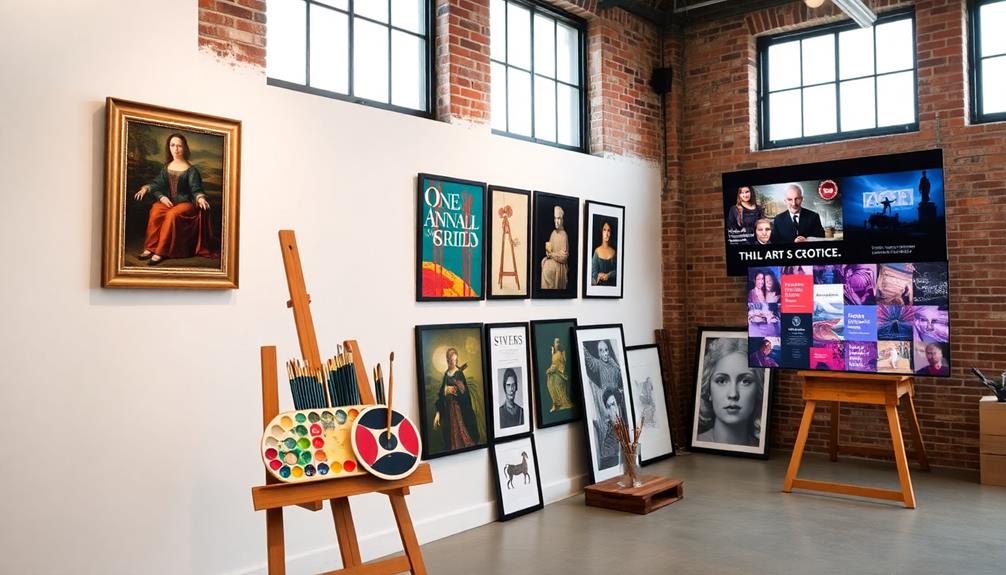
Canvas wall art has established a remarkable legacy that continues to shape the cultural landscape of art today. The shift to canvas during the Renaissance marked a pivotal moment, allowing artists to create larger, more dynamic works. This alteration greatly influenced artistic expression across Europe, paving the way for styles that remain relevant. You can see this evolution reflected in the versatility of canvas art, as contemporary artists explore new techniques and themes, enriching the modern art scene.
During the Baroque period, collaborations between artists and frame makers led to the design of wooden frames that enhanced the presentation of canvas artworks. This innovation solidified canvas's status in galleries and homes, making it a staple of artistic display.
Furthermore, canvas art has played an essential role in democratizing art, making it more accessible to a broader audience. This accessibility fosters increased appreciation and engagement with artistic expression.
The cultural impact of canvas wall art is evident in its adaptability to various movements and trends. From traditional paintings to modern street art, canvas has proven itself as a medium that embraces change while maintaining its core essence.
This enduring legacy shows how canvas art not only reflects societal values but also influences them. As you explore the diverse world of canvas wall art, you'll appreciate its role in shaping both individual perspectives and collective cultural narratives.
Whether in a museum, a home, or on the streets, canvas art continues to inspire and resonate with people across generations.
Contemporary Innovations in Canvas Art
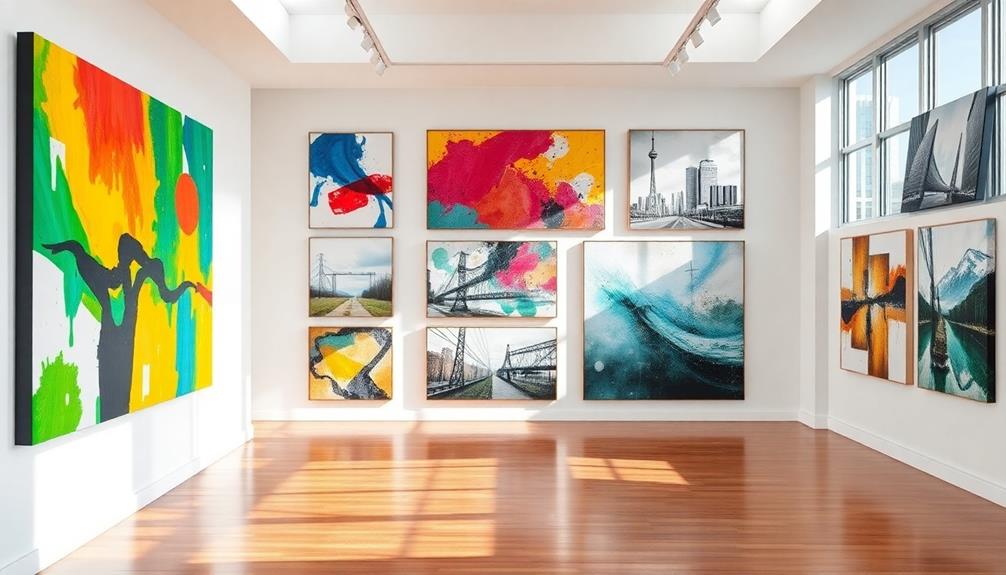
The evolution of canvas art in recent years showcases a thrilling blend of tradition and innovation. Contemporary canvas art is now defined by technological advancements like high-definition printing and augmented reality features. These innovations enhance the visual appeal and interactivity of artworks, allowing you to engage with art in ways that were once unimaginable.
Digital art has also transformed canvas printing, enabling artists to produce high-quality images that keep the integrity of the original pieces intact. With the rise of customization options, you can now personalize your canvas prints, choosing various sizes, thicknesses, and border finishes to match your personal style. This accessibility empowers individual expression like never before.
Moreover, innovations in the canvas printing process have broadened the distribution of art. It's now easier for artists to reach wider audiences, and you can collect replicas of iconic masterpieces at affordable prices. Here's a quick look at some key contemporary innovations in canvas art:
| Innovation | Description | Impact on Art Lovers |
|---|---|---|
| High-Definition Printing | Produces sharp, vibrant images | Enhances visual experience |
| Augmented Reality | Adds interactive elements to artworks | Creates a deeper connection with art |
| Digital Art Influence | Allows for high-quality reproductions | Maintains originality while being accessible |
| Customization Options | Enables personal tailoring of canvas prints | Encourages individual expression |
| Wider Distribution | Makes art more accessible to a global audience | Increases availability of diverse artworks |
These advancements mark an exciting time for canvas art, blending tradition with modernity in remarkable ways.
Sustainability in Art Production
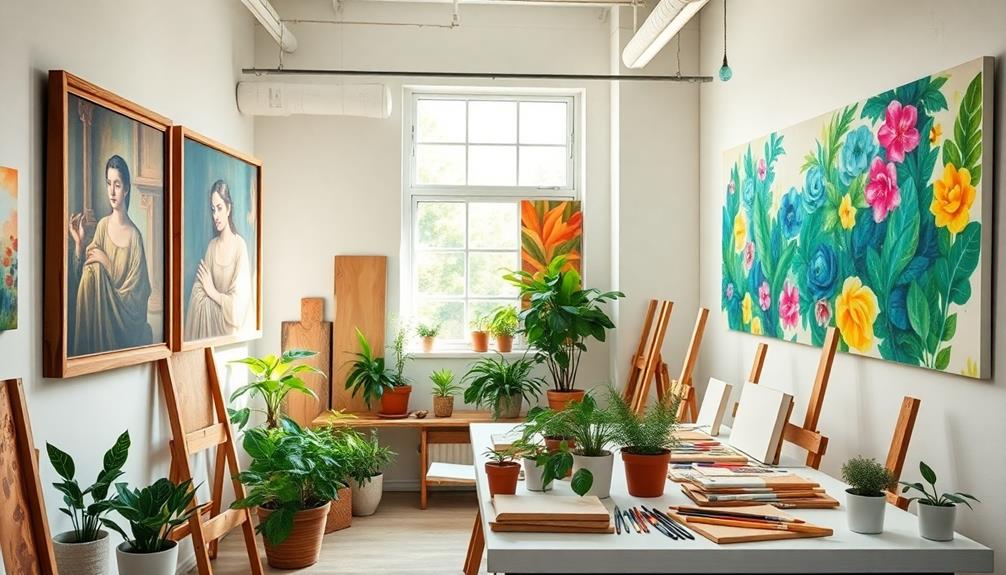
As contemporary art evolves, so does the focus on sustainability within the art production process. Artists and manufacturers are increasingly aware of their environmental impact, leading to a significant shift in how art materials are sourced and produced.
You might be surprised to learn that eco-friendly options, like organic cotton and recycled polyester blends, are becoming the norm in canvas production. This change not only reduces environmental footprints but also aligns with consumer preferences for responsible products.
Here are a few ways sustainability is shaping the art world today:
- Use of Non-Toxic Materials: Many artists are opting for non-toxic paints and inks that are safer for both creators and the environment.
- Innovative Production Techniques: New methods are being developed to minimize waste in the production process, making it more efficient and eco-conscious.
- Ethically Sourced Materials: A growing number of companies are ensuring that their materials come from sustainable sources, lowering their carbon footprints.
- Raising Awareness: As climate change becomes a pressing issue, artists are using their platforms to promote sustainable practices, influencing consumers and other creators.
The art community's embrace of sustainability isn't just a trend; it's a transformative movement that impacts how art is produced and consumed.
Final Thoughts
In tracing the journey of canvas wall art from the Renaissance to today, you've witnessed a vibrant fabric woven with innovation, accessibility, and cultural significance. Each brushstroke reflects not just artistic evolution, but also the shifting tides of society. As you explore contemporary innovations and sustainable practices, remember that every piece of canvas art is a window into the heart of human expression, inviting you to appreciate both its beauty and the stories it tells. At VerVeLush, we celebrate this rich heritage by offering expertly curated canvas prints that blend timeless artistry with modern techniques, ensuring that you find the perfect piece to enhance your space and evoke emotion. Explore our unique collection to discover how canvas art can transform your environment while honoring the artistic journey through time.

